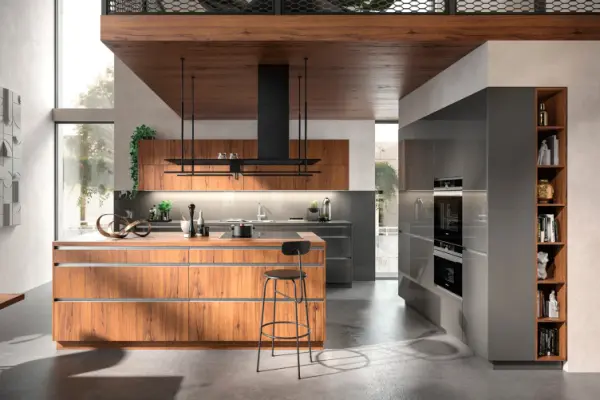The kitchen is not just a place for cooking, it's the heart of the home, the center of a functional kitchen interior, where the perfect kitchen of your dreams is created. Here the whole family gathers, important conversations take place, and warm memories are born for years to come. Isn't it wonderful to have a space that reflects your individuality and suits your lifestyle? The organization of the kitchen space affects not only the kitchen ergonomics and convenience of daily use but also the general mood in the house. In this article, we will look at the key aspects of the art of designing the perfect kitchen: from ergonomic planning and kitchen space design to choosing quality materials and stylish solutions for kitchen decoration. Our goal is to help you design a cozy and functional kitchen that combines aesthetics, comfort, and practicality. We will share secrets for creating the perfect kitchen, give advice on choosing kitchen furniture that will last for many years, and inspire you with ideas for modern kitchen design, from classics to minimalism in the kitchen and Scandinavian style. Are you ready to transform an ordinary kitchen into the space of your dreams? Whether you are planning a kitchen in a new home or updating your current kitchen interior, this article will be your reliable guide to the world of kitchen spaces.
Functional Planning and Kitchen Design
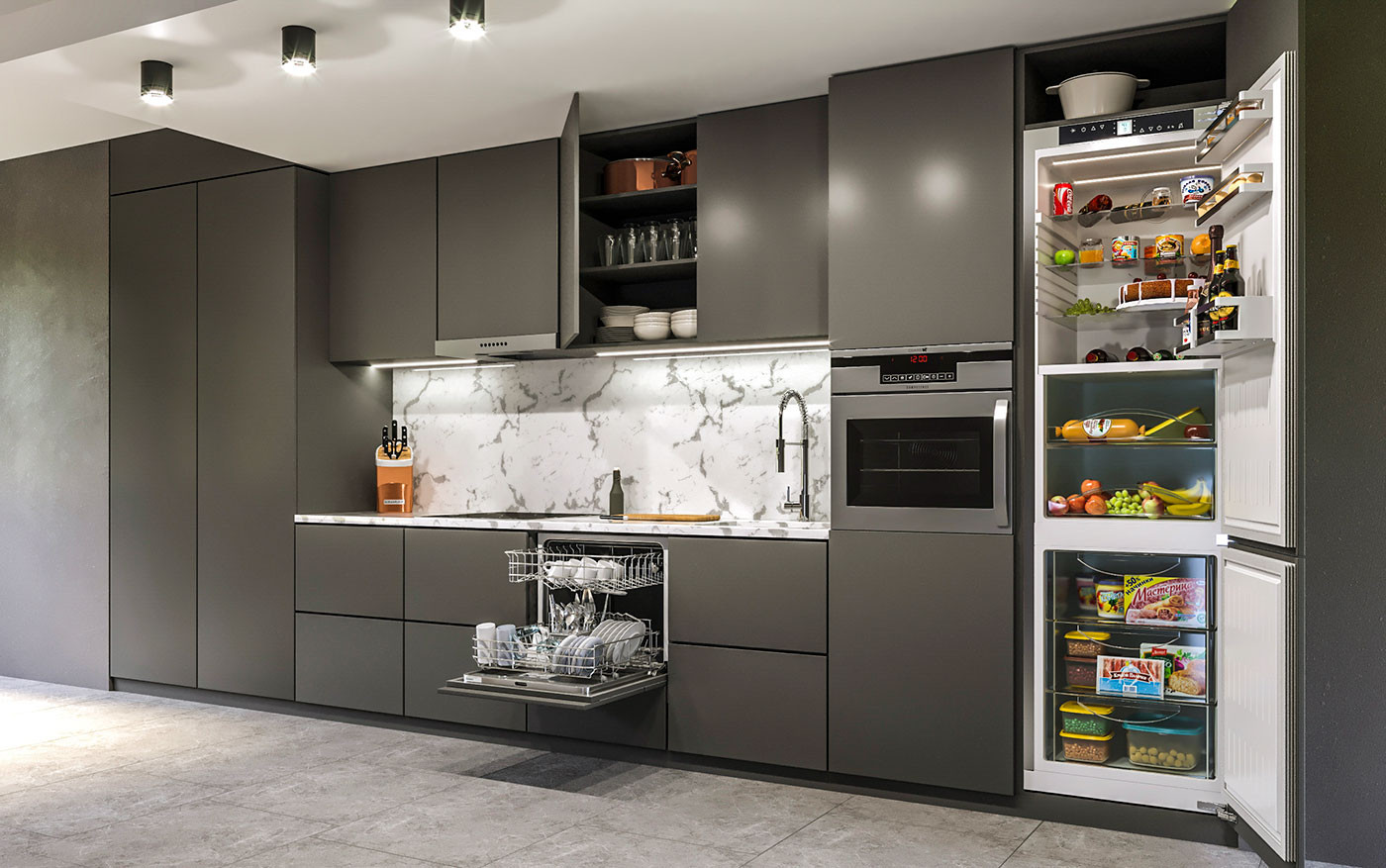 When designing a kitchen space, especially in a new home, competent planning is of paramount importance. This stage determines not only the appearance but also the functionality of the kitchen interior. It's important to consider your lifestyle and personal preferences. For example, if you love hosting family dinners, you should think about a spacious work area and a large dining table. You should also pay attention to the style and architecture: modern minimalism in the kitchen or cozy classics? The choice of style sets the tone for the entire kitchen interior.
When designing a kitchen space, especially in a new home, competent planning is of paramount importance. This stage determines not only the appearance but also the functionality of the kitchen interior. It's important to consider your lifestyle and personal preferences. For example, if you love hosting family dinners, you should think about a spacious work area and a large dining table. You should also pay attention to the style and architecture: modern minimalism in the kitchen or cozy classics? The choice of style sets the tone for the entire kitchen interior.
When creating the perfect kitchen, it is necessary to think through the location of the main elements: refrigerator, stove, sink. Their convenient placement ensures efficiency and comfort when using the kitchen. Professional designers recommend using the principle of the "working triangle." As ergonomic studies show, the correct arrangement of key zones significantly improves the convenience of working in the kitchen.
"A properly designed kitchen triangle reduces movement by 20-30% when cooking. The optimal distance between the main work areas is from 1.2 to 2.7 meters. This significantly improves kitchen ergonomics and makes the cooking process more enjoyable," — note experts in kitchen space ergonomics.
Don't forget about storage systems: will there be enough cabinets for dishes, food, and kitchen utensils? The organization of space in the kitchen should be thought out to the smallest detail. The choice of kitchen lighting is also important: it should be functional and create a pleasant atmosphere. Modern kitchen design involves multi-level lighting: general, work, and decorative. Proper zoning of the kitchen with light will help visually divide the space into functional areas.
In the end, a well-planned functional kitchen is a combination of convenience, style, and practicality that will make time spent in the kitchen truly enjoyable.
Choosing Kitchen Furniture: Long-Term Perspective
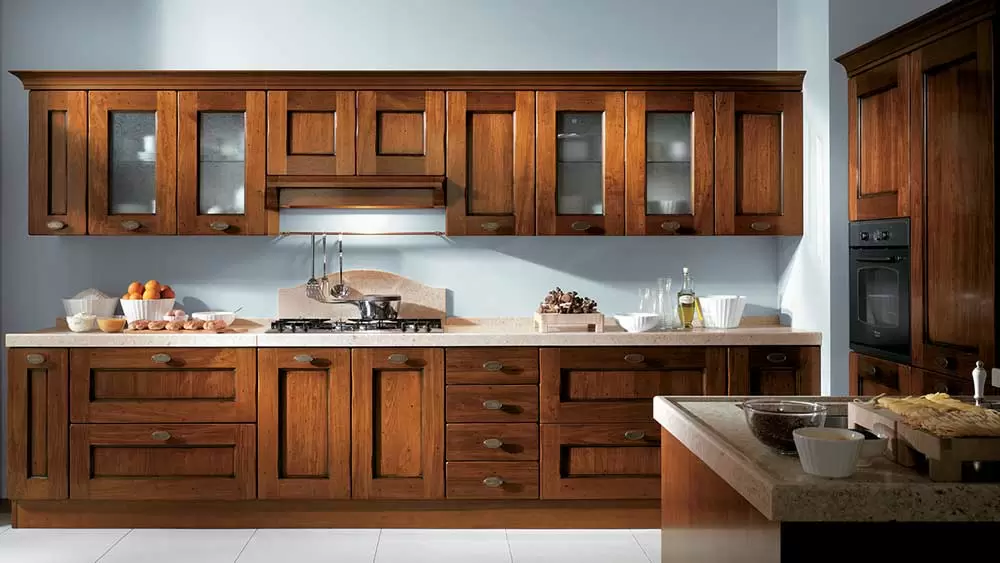 Choosing kitchen furniture is an investment for many years. It's important to consider not only the style and design but also the quality of the materials from which it is made. For example, furniture made of solid wood will cost more but will last much longer than that made of particleboard. However, it's worth remembering that natural materials in design require careful maintenance.
Choosing kitchen furniture is an investment for many years. It's important to consider not only the style and design but also the quality of the materials from which it is made. For example, furniture made of solid wood will cost more but will last much longer than that made of particleboard. However, it's worth remembering that natural materials in design require careful maintenance.
The lifespan of kitchen furniture also depends on the intensity of use. For example, in families with small children or where cooking is frequent, furniture is subjected to greater stress. In such cases, it is recommended to choose furniture with increased resistance to wear and easily cleanable surfaces. If you plan to buy a kitchen set, pay attention to the quality of fittings and mechanisms — these are important elements that determine durability.
Also, don't forget about functionality: spacious drawers, convenient cabinets, and niches for household appliances significantly simplify life in the kitchen. The integration of modern technologies, such as "soft-close" systems or built-in storage organizers, makes using the kitchen even more comfortable.
When choosing kitchen furniture, it's important to consider many factors. Below is a comparative characteristic of various materials for kitchen furniture facades:
| Material | Advantages | Disadvantages | Lifespan | Maintenance |
|---|---|---|---|---|
| Solid wood | Environmental friendliness, durability, aesthetics, prestige | High price, sensitivity to moisture | 15-20 years | Regular treatment with special compounds |
| MDF | Durability, variety of finishes, shape stability | Medium moisture resistance | 10-15 years | Simple care without aggressive means |
| Plastic/Acrylic | Moisture resistance, wide color range, ease of care | Sensitivity to scratches | 7-10 years | Mild detergents |
| Glass | Modern look, resistance to moisture and temperature | Fragility, visibility of fingerprints | 10-15 years | Special glass cleaners |
This table will help you make an informed choice when planning the perfect kitchen, taking into account your needs, budget, and aesthetic preferences.
In the end, the choice of kitchen furniture should be thoughtful: consider both aesthetic appeal and practicality for long-term use. Properly selected furniture will be the basis of a functional kitchen interior for many years. If you want a custom kitchen, it's worth discussing all the details with the manufacturer in advance, including materials, dimensions, and color scheme.
Modern Trends: Studio Kitchens and Smart Technologies
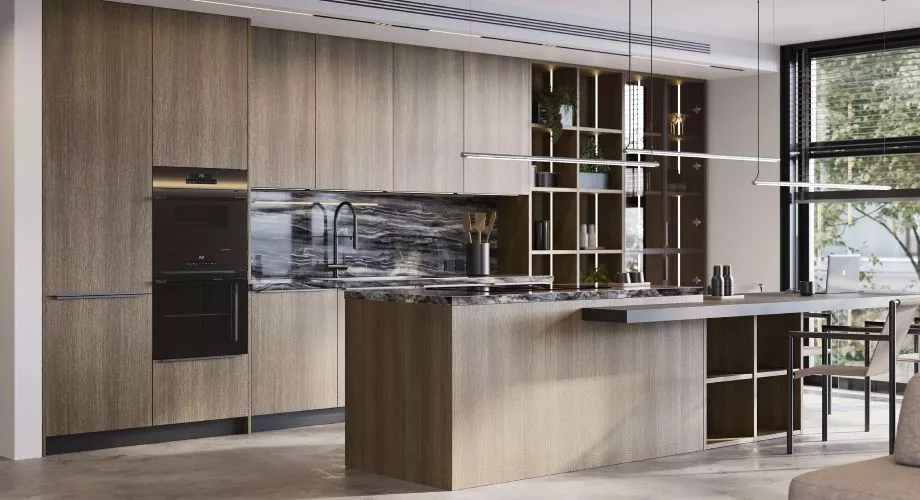 Studio kitchens have become one of the most popular choices in modern house building. This style offers an open space that combines the kitchen with the living room or dining room, creating the impression of a larger area and freedom. This choice is especially relevant for designing kitchen space in apartments with limited area, where every square meter counts.
Studio kitchens have become one of the most popular choices in modern house building. This style offers an open space that combines the kitchen with the living room or dining room, creating the impression of a larger area and freedom. This choice is especially relevant for designing kitchen space in apartments with limited area, where every square meter counts.
According to research on modern trends in kitchen design, the integration of new technologies is radically changing our idea of the perfect kitchen. Just imagine how much your life will be simplified with smart kitchen appliances!
"Smart kitchens save up to 15% of energy thanks to modern appliances with intelligent control. As of 2025, about 40% of new kitchens include IoT devices to improve efficiency and comfort. Such technologies not only simplify the cooking process but also make the kitchen the center of a modern smart home," — confirm specialists in smart technology integration.
One of the key features of modern kitchen design is built-in household appliances. This not only saves space but also gives the interior a neater and more modern look. Additionally, hidden appliances are safer for families with small children, as all electrical appliances are behind panels and not accessible to toddlers. The correct placement of appliances in the kitchen is an important aspect of ergonomic design.
This type of kitchen layout also contributes to greater social interaction within the home: while cooking in the kitchen, you can chat with family or guests in the living room. This creates a more open and friendly atmosphere in the home. According to statistics, in 2025, about 70% of new homes in the US and Europe have open-plan kitchens that combine cooking space and living areas. Combining the kitchen with the living room is becoming increasingly popular in Russia as well.
In conclusion, studio kitchens are a modern and functional solution that combines aesthetics, practicality, and contributes to creating a more open and sociable space in the home. When creating the perfect kitchen, it's worth paying attention to this popular trend.
Practical Aspects of Choosing a Kitchen
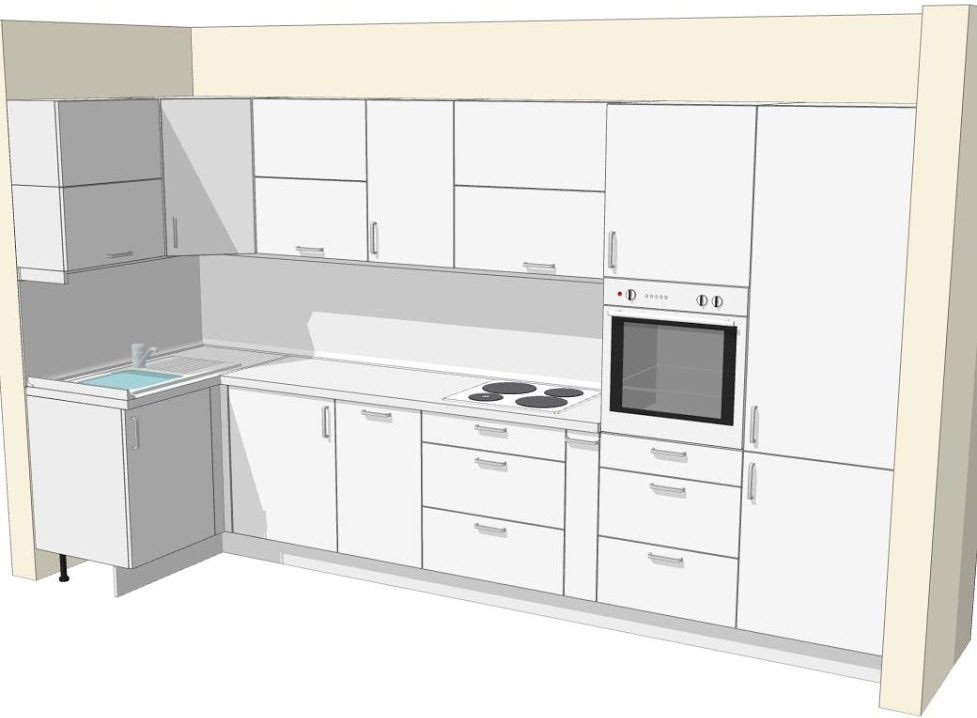 When choosing a kitchen, it's important not only to decide on the design but also to choose a reliable contractor. Start by studying the market: compare prices and assortments from different manufacturers and suppliers. It's important to pay attention to customer reviews and the availability of quality certificates, which are a guarantee of reliability and durability of the furniture. Agree, disappointment from poor-quality work can cross out all your dreams of the perfect kitchen! How to avoid such an annoying mistake and guarantee pleasure from every moment spent in the new kitchen?
When choosing a kitchen, it's important not only to decide on the design but also to choose a reliable contractor. Start by studying the market: compare prices and assortments from different manufacturers and suppliers. It's important to pay attention to customer reviews and the availability of quality certificates, which are a guarantee of reliability and durability of the furniture. Agree, disappointment from poor-quality work can cross out all your dreams of the perfect kitchen! How to avoid such an annoying mistake and guarantee pleasure from every moment spent in the new kitchen?
Kitchen planning requires attention to detail. Determine how many dishes and kitchen utensils need to be stored, what appliances you plan to use. Also, think about the location of the main elements: sink, stove, refrigerator, as well as the material and location of the countertop. All this affects the functionality and convenience of the kitchen in everyday use.
Remember that the perfect kitchen should be not only beautiful but also practical. Choose materials that are easy to clean and suitable for your lifestyle. For example, glossy surfaces look stylish, but fingerprints easily remain on them, which can be impractical for families with small children.
Transformation Story: Scandinavian Simplicity in a Chicago Loft
In 2023, a couple from Chicago transformed an 8.4 sq.m. loft kitchen into a Scandinavian-style space with the help of Studio Gild. Using white oak cabinets, an island with a quartz countertop, and built-in appliances, they maximized space and light. Hidden storage systems and a folding dining area saved 15% of space, while smart lighting created the right atmosphere. The functional kitchen interior reduced energy consumption by 10% due to efficient appliances. The couple noted that they began hosting guests 30% more often thanks to the convenient layout. This project clearly demonstrates how even in a small space, you can create a cozy and stylish kitchen that combines minimalism, functionality, and aesthetics.
In the end, careful planning and choosing a quality contractor will provide you with a kitchen that will please you not only with its appearance but also with its functionality for many years. Pay special attention to kitchen ergonomics – it's an investment in your daily comfort.
Stylistic Diversity of Kitchens: From Classic to High-Tech
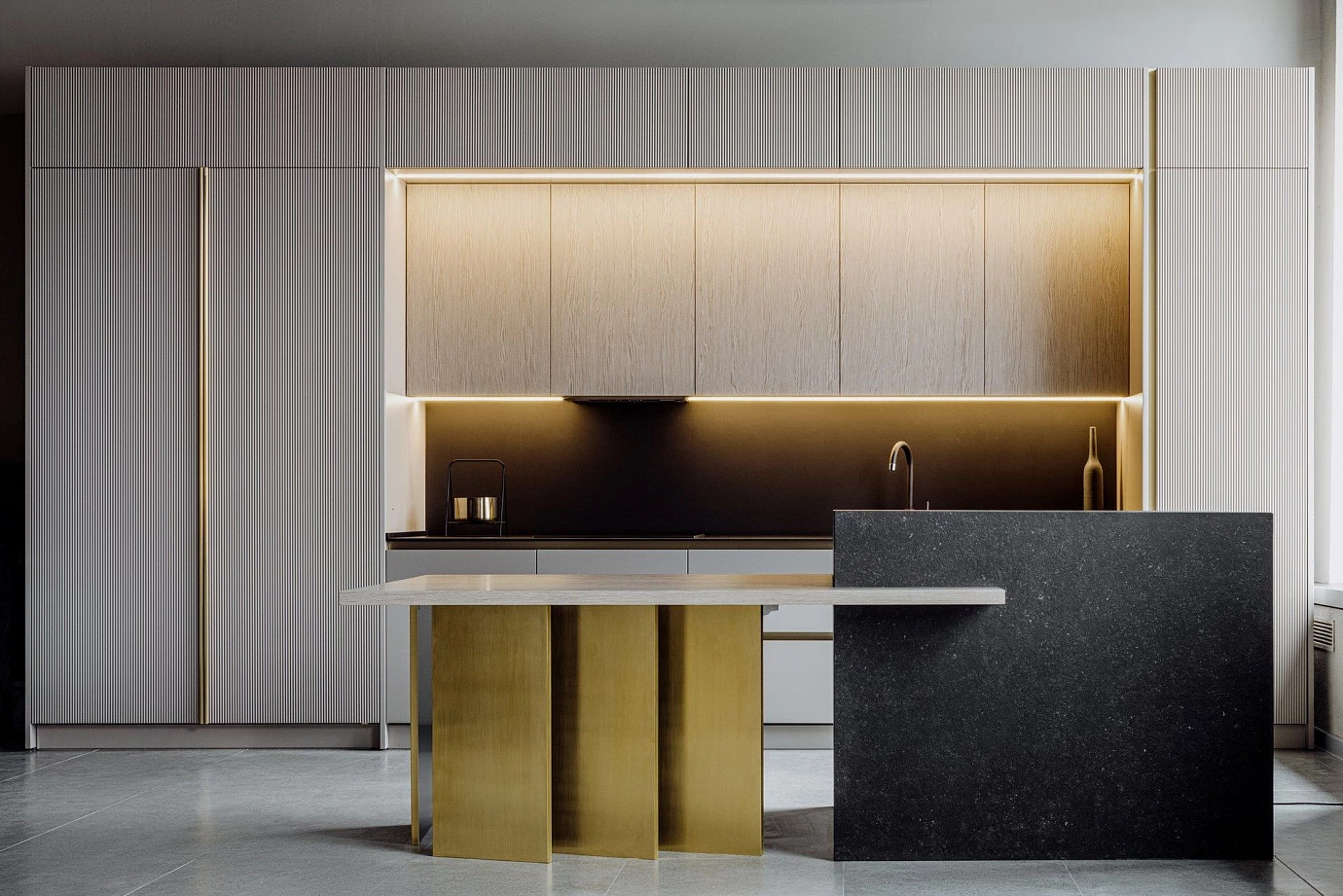 The choice of kitchen style is not only a matter of taste but also a reflection of your lifestyle and preferences. A kitchen in classic style is preferable for those who value traditions and coziness. Characteristic features are natural materials, such as wood, and a calm color palette: beige, cream, shades of natural wood. The classics never go out of style and are characterized by temporal stability.
The choice of kitchen style is not only a matter of taste but also a reflection of your lifestyle and preferences. A kitchen in classic style is preferable for those who value traditions and coziness. Characteristic features are natural materials, such as wood, and a calm color palette: beige, cream, shades of natural wood. The classics never go out of style and are characterized by temporal stability.
On the other hand, modern styles, such as High-Tech, are preferred by people striving for minimalism in the kitchen and functionality. This style is characterized by simple lines, metal or glass elements, and bright accents. Such kitchens are often equipped with the latest technological innovations and are ideal for young, active families. Just imagine how delightful a kitchen with perfectly smooth surfaces and ideally organized space looks! Don't you have a desire to immediately transform your kitchen?
Leading architectural publications regularly publish collections of trends in kitchen design, which helps to keep track of current tendencies. Isn't it fascinating to observe how styles change and new, exciting ideas for kitchen interiors appear?
It's important that the kitchen style harmonizes with the overall design of the house or apartment. For example, a classic kitchen might look out of place in an ultra-modern interior and vice versa. When choosing a style, also consider the color palette of the kitchen and the materials of the furniture and finishing. They should match the overall color scheme of your home.
Scandinavian kitchen style has become especially popular in recent years due to its practicality, light tones, and laconic forms. Such a design of the perfect kitchen creates a sense of space even in small rooms. And for those who value comfort and romance, a kitchen in the Provence style with its pastel tones and vintage elements is perfect. Current trends in kitchen design constantly evolve, offering new interesting solutions.
The choice of kitchen style is an opportunity to express your individuality and create a space that will make you happy every day. Don't be afraid to experiment and combine different style solutions, creating a unique and functional kitchen interior.
Materials and Quality of Kitchens: The Key to Durability
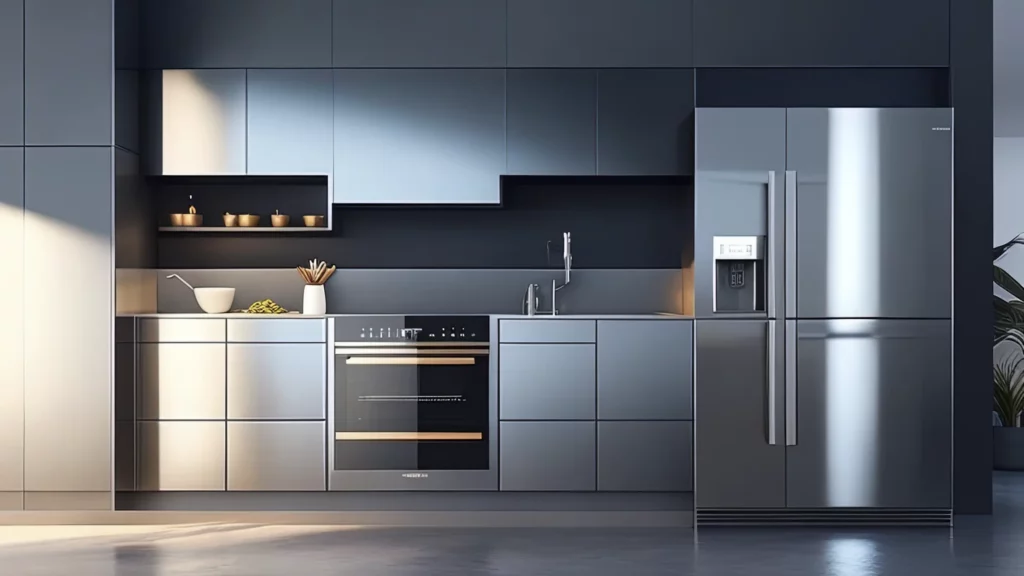 The quality and durability of kitchen furniture largely depend on the chosen materials. For facades, materials such as MDF, laminate, solid wood, or acrylic are often used. Each of them has its advantages and disadvantages. For example, solid wood stands out for its aesthetics and strength, but requires more careful maintenance and is higher in price. MDF and laminate are more budget-friendly options, but they may be less resistant to moisture and mechanical damage.
The quality and durability of kitchen furniture largely depend on the chosen materials. For facades, materials such as MDF, laminate, solid wood, or acrylic are often used. Each of them has its advantages and disadvantages. For example, solid wood stands out for its aesthetics and strength, but requires more careful maintenance and is higher in price. MDF and laminate are more budget-friendly options, but they may be less resistant to moisture and mechanical damage.
It's worth paying special attention to choosing a countertop for the kitchen. This is one of the most loaded parts of the kitchen, so its selection should be approached particularly carefully. The variety of materials is impressive: natural or artificial stone, wood, glass, stainless steel. Each has its characteristics. Natural stone, for example, is very durable and resistant to scratches, but also quite expensive. Wood requires regular treatment but gives the kitchen warmth and coziness.
Eco-friendly kitchen design is becoming increasingly popular. According to research, about 50% of kitchen renovations in 2025 prioritize eco-friendly materials. Recycled countertops and bamboo cabinets reduce environmental impact by 30%, which is important for environmentally conscious consumers.
Furniture coating is equally important. It should be not only beautiful but also practical, easy to clean, and resistant to damage. For example, matte surfaces are less prone to marking than glossy ones, but the latter look more modern and elegant in kitchen design. A correctly chosen color palette for the kitchen will create a harmonious space and affect your mood and appetite.
Choosing materials for the kitchen is a delicate balance between beauty, functionality, and budget. It's important to find a combination that will please you with its appearance and simultaneously meet your everyday needs when creating the perfect kitchen. Isn't it amazing how properly selected materials can transform even the most ordinary space? What story do you want your kitchen to tell to guests and family members?
Conclusion: Summarizing the Key Points
Designing a kitchen space is an important and responsible decision that has a significant impact on the comfort and convenience of your home. Creating the perfect kitchen requires considering not only your own tastes and preferences but also practical aspects of using the space. Imagine the pleasure of cooking in a kitchen where every detail is thoughtfully designed specifically for you! Isn't it worth spending time and effort to turn your dream of the perfect kitchen into reality?
Competent planning and a well-thought-out kitchen design ensure functionality. Choosing quality furniture that is resistant to wear and easy to maintain will ensure its durability. Additionally, the kitchen style should harmonize with the overall interior of the house, reflecting your individuality and creating a cozy atmosphere. Small kitchen design requires special attention to details and the use of special techniques for visually expanding the space.
Don't forget about kitchen ergonomics and materials: they play a key role in durability and appearance. Whether it's the choice of facades, countertops, or furniture coating, each element is important for creating a functional and stylish kitchen interior. Practical solutions for the kitchen will help you create not only a beautiful but also a convenient space that will please you every day.
Ultimately, the kitchen is a place where family traditions and memories are created. Therefore, choose a kitchen that will reflect your individuality, match your lifestyle, and bring joy from every moment spent in it.
